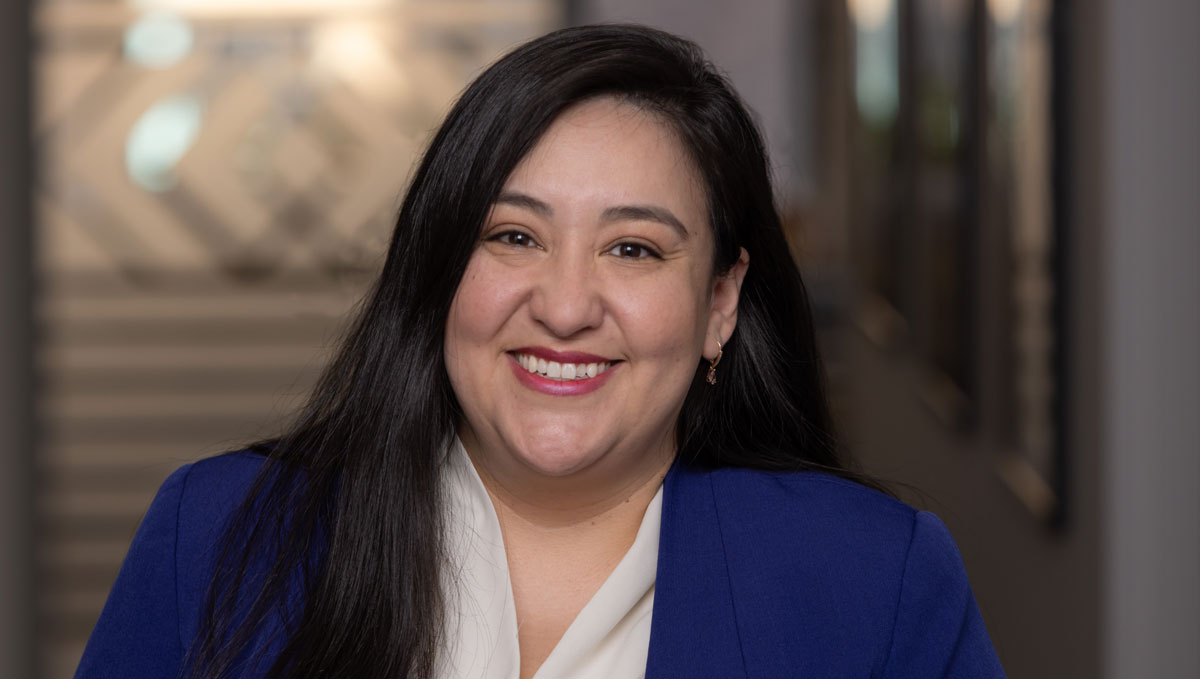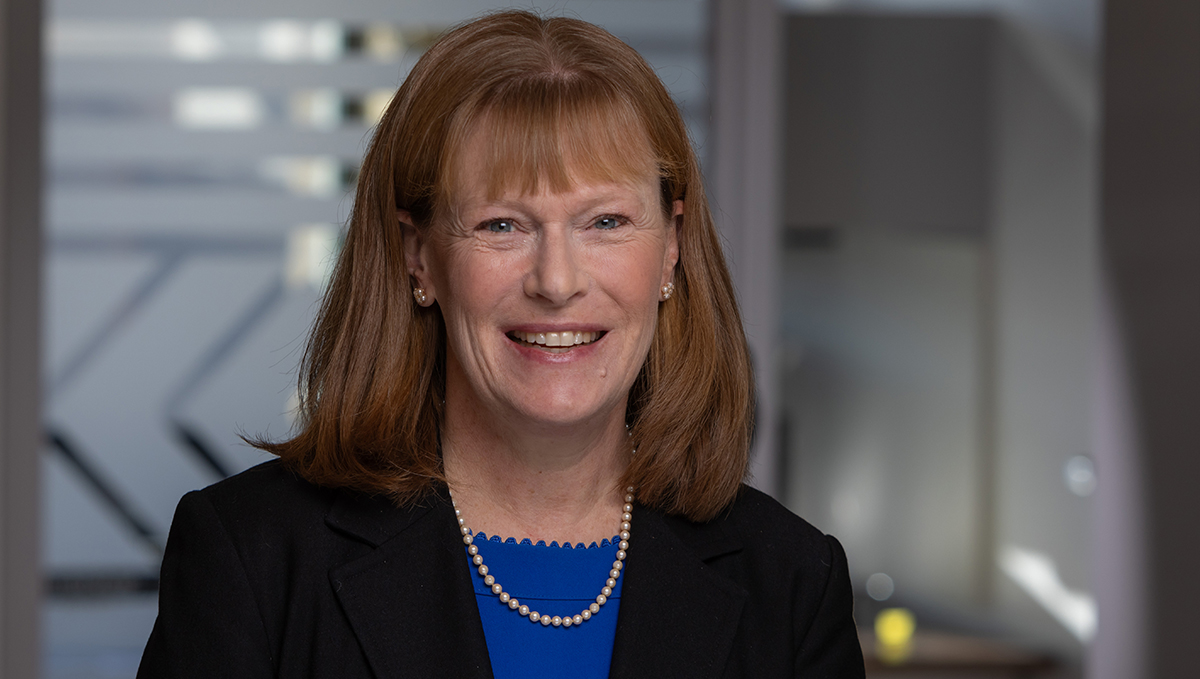As lawyers, we are driven, passionate about our careers and our families, and if we work in private practice, constantly counting (or thinking about counting) our time in six-minute increments. While we give our clients constant time and attention, we are not necessarily as good about giving that same time and attention to ourselves, our loved ones, or our colleagues when they need it most. I’d like to think that I’m now much better at that than I used to be—but only because I had to be.
While my path to law school was fairly ordinary (I worked for three years in the legal field, took the LSAT, enrolled in law school), my path through law school was very unusual—my now-husband was diagnosed with leukemia three weeks after I started law school. I will never forget the night he was diagnosed—it was the first time I felt like I could take a night off from studying. We went to dinner and a movie with friends. We returned home, nearly midnight, to see multiple lights blinking on our answering machine (yes, we still had a machine). There were multiple messages from a doctor that my husband had gone to see that morning, as well as two messages from his parents. We debated, and ultimately called his parents. My father-in-law answered the phone on one ring, and delivered the worst news I had ever heard—my husband had cancer. “Go to the hospital—Now. The doctor is waiting for you.”
[/et_pb_text][/et_pb_column][et_pb_column type=”1_2″][et_pb_image admin_label=”Image” src=”https://live-llgmke.pantheonsite.io/wp-content/uploads/2017/09/getting_some_help-W.jpg” show_in_lightbox=”off” url_new_window=”off” use_overlay=”off” animation=”right” sticky=”off” align=”center” force_fullwidth=”off” always_center_on_mobile=”on” use_border_color=”off” border_color=”#ffffff” border_style=”solid”] [/et_pb_image][/et_pb_column][/et_pb_row][et_pb_row admin_label=”Row”][et_pb_column type=”4_4″][et_pb_text admin_label=”Text” background_layout=”light” text_orientation=”left” use_border_color=”off” border_color=”#ffffff” border_style=”solid”]The next few months were a whirlwind of tests, chemo, radiation, and many nights in the hospital for my husband. Sitting by his side, I was both distracted from the reality of his cancer by Contracts, Con Law, Property, and Civ Pro, and too overwhelmed to ask others for help. Fortunately, people stepped in without my asking. My new law school classmates were an incredible support network—as were my in-laws, parents, and some of our college friends. They shared their outlines, fed me, gave me keys to their apartments near the hospital, and cleaned my apartment.
My husband was declared cancer free in 2004 and underwent a stem cell transplant. After several months of grueling treatment, he was getting stronger every day. I took my finals, got a summer job, and we moved on with our lives. I graduated, we got married, I started my first big law firm job, and we moved to a new city to start our lives.
Fast forward five years—my husband had recently quit his job to care for our newborn daughter and was starting to have trouble breathing. On my daughter’s first birthday, the doctors placed my husband on supplemental oxygen. My life was now dominated not only by our baby and my work schedule, but also my husband’s need to be constantly tethered to 50 feet of plastic tubing or a portable oxygen tank. In 2012, my husband was placed on a lung transplant list—an unusual form of graft-versus-host disease from his stem cell transplant had manifested in his lungs and reduced their function to approximately 30 percent of normal. The cancer was gone, but the side effects of his treatment were so debilitating that they seemed harder for us both to manage than his battle with cancer. When I wasn’t billing, I spent all of my other time worried about how to minimize the day-to-day stresses on my husband and make sure our daughter was properly cared for. And while I was not the one that was sick, I had a much harder time keeping it all together—something that was expected of me in my job. Every. Single. Day. No lawyer is good at waiting—but waiting for “the call” that the hospital had a pair of lungs that were a match and could save my husband’s life was the longest, most stressful 15 months of my life. During that time, failing to ask for help was no longer an option. I was trying to manage a household, raise a small child, and keep my husband from getting sick, all while meeting my billable hours. During that time, I felt very isolated and alone. I cut out all business travel that was not within a 90- mile radius of our local airport, rarely went anywhere overnight, and carried my phone literally everywhere. Every time the phone rang, I was worried it was “the call.”
Learning to cut myself some slack and ask for help was critical to my survival during those 15 months. It was the most difficult thing I have ever had to do. The hardest part was that I didn’t know what to ask for. Thank goodness my support network, including our families, friends, coworkers, and our church, stepped up when I finally admitted that I didn’t know what I needed but knew I couldn’t do it all myself. They helped me in both big and small ways: running errands, arranging for housecleaning, cooking meals, taking me out of the house, and keeping us all comfortable.
When we finally got the call, I put our carefully executed plan in place and moved my family to the transplant center in Minneapolis for three months. While there, I called on my many DRI friends who gave me a place to work when I was able, made us home-cooked meals, and provided much-needed diversions for my then three-year-old daughter to have a fun and normal “summer.” I could not have survived the experience without the help of my family, friends, DRI and work colleagues, therapist, and even a few friendly strangers.
[/et_pb_text][/et_pb_column][/et_pb_row][et_pb_row admin_label=”Row” make_fullwidth=”off” use_custom_width=”off” width_unit=”on” use_custom_gutter=”off” custom_padding=”||0px|” allow_player_pause=”off” parallax=”off” parallax_method=”off” make_equal=”off” parallax_1=”off” parallax_method_1=”off” parallax_2=”off” parallax_method_2=”off”][et_pb_column type=”1_2″][et_pb_image admin_label=”Image” src=”https://live-llgmke.pantheonsite.io/wp-content/uploads/2017/09/communication_barrier-W.jpg” show_in_lightbox=”off” url_new_window=”off” use_overlay=”off” animation=”left” sticky=”off” align=”center” force_fullwidth=”off” always_center_on_mobile=”on” use_border_color=”off” border_color=”#ffffff” border_style=”solid”] [/et_pb_image][/et_pb_column][et_pb_column type=”1_2″][et_pb_text admin_label=”Text” background_layout=”light” text_orientation=”left” use_border_color=”off” border_color=”#ffffff” border_style=”solid”]I recently attended one of the book tours with Sheryl Sandberg for her latest work, Option B, where she talked openly and honestly about the devastating effect that her husband’s sudden death in 2015 had on her personally and professionally. One of the things that she says (both in her book and in her speech) was that one of her greatest struggles was acknowledging the elephant in the room when she was with others. She needed her friends, colleagues, and family to recognize that she was human and acknowledge her suffering. Of course she thought about losing her husband every day. She said friends and colleagues ignoring it did not make it better. Much like my experience waiting for my husband’s transplant and not knowing when “the call” would come, Sandberg’s loss of her spouse was so isolating. Even though Sandberg admits she has many resources that others do not—she often wished that someone would reach out to her, simply acknowledge how much pain she was feeling, and talk to her like she was a real person. And she’s Sheryl Sandberg! If Sheryl Sandberg feels this way—how on earth should the rest of us feel?
[/et_pb_text][/et_pb_column][/et_pb_row][et_pb_row admin_label=”Row” make_fullwidth=”off” use_custom_width=”off” width_unit=”on” use_custom_gutter=”off” allow_player_pause=”off” parallax=”off” parallax_method=”off” make_equal=”off” parallax_1=”off” parallax_method_1=”off” column_padding_mobile=”on”][et_pb_column type=”4_4″][et_pb_divider admin_label=”Divider” color=”#aeaeac” show_divider=”on” divider_style=”solid” divider_position=”top” hide_on_mobile=”off”] [/et_pb_divider][et_pb_text admin_label=”Text” background_layout=”light” text_orientation=”left” text_font=”PT Serif||||” text_font_size=”36″ text_text_color=”#363636″ use_border_color=”off” border_color=”#ffffff” border_style=”solid” custom_margin=”16px||30px|” text_line_height=”1.3em” text_font_size_last_edited=”on|phone” text_font_size_tablet=”28″ text_font_size_phone=”20″]
My experience taught me that the answer is to ask for help. If you’re like me and asking for help doesn’t come easy to you, then ask for help asking for help.
[/et_pb_text][et_pb_divider admin_label=”Divider” color=”#aeaeac” show_divider=”on” divider_style=”solid” divider_position=”top” hide_on_mobile=”off”] [/et_pb_divider][/et_pb_column][/et_pb_row][et_pb_row admin_label=”Row”][et_pb_column type=”4_4″][et_pb_text admin_label=”Text” background_layout=”light” text_orientation=”left” use_border_color=”off” border_color=”#ffffff” border_style=”solid”]I am pleased to say that my husband will celebrate his four-year transplant anniversary this August. He is doing many of the things we thought he might never do again (running, playing trumpet, swimming, breathing without assistance) and feels great. My daughter barely remembers our time in Minneapolis or the time waiting on “the list.” While the journey has not been easy, now that I am on this side of the “list” I know that the best ways to help someone in this kind of stressful situation are to mean it sincerely when you offer help and then to follow through. Don’t wait for someone struggling to ask you for what they need—make an offer. Knock on the door. Bring them a coffee. Drop off a meal. Don’t worry about doing the right thing—doing something is better than doing nothing at all.
[/et_pb_text][/et_pb_column][/et_pb_row][et_pb_row admin_label=”Row”][et_pb_column type=”1_2″][et_pb_text admin_label=”Text” background_layout=”light” text_orientation=”left” use_border_color=”off” border_color=”#ffffff” border_style=”solid”]It’s ok to admit that you don’t know what to say. When we were living on “the list,” there were both good days and bad days, but those people that really helped me through the bad days were those that both acknowledged how much things must suck while still treating me like a human who still needed food, coffee, wine, yoga, a good laugh, and billable work to do.
We are all passionate about our work, but let’s all learn to be more compassionate to ourselves and our struggling colleagues, too. There’s nothing wrong with admitting that you need help and letting others help you.
[/et_pb_text][/et_pb_column][et_pb_column type=”1_2″][et_pb_image admin_label=”Image” src=”https://live-llgmke.pantheonsite.io/wp-content/uploads/2017/09/overcoming_communication_barrier-W-sil.jpg” show_in_lightbox=”off” url_new_window=”off” use_overlay=”off” animation=”right” sticky=”off” align=”left” force_fullwidth=”off” always_center_on_mobile=”on” use_border_color=”off” border_color=”#ffffff” border_style=”solid”] [/et_pb_image][/et_pb_column][/et_pb_row][et_pb_row admin_label=”Row”][et_pb_column type=”4_4″][et_pb_text admin_label=”Text” background_layout=”light” text_orientation=”left” use_border_color=”off” border_color=”#ffffff” border_style=”solid”]*This article was originally published in the August 2017 Edition of DRI For the Defense. It is reposted here with permission.
[/et_pb_text][/et_pb_column][/et_pb_row][/et_pb_section]


